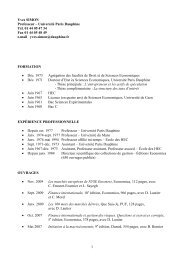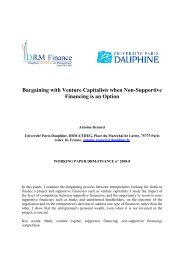Corporate governance and earnings management ... - CEREG
Corporate governance and earnings management ... - CEREG
Corporate governance and earnings management ... - CEREG
Create successful ePaper yourself
Turn your PDF publications into a flip-book with our unique Google optimized e-Paper software.
supporters of the actuarial approach, like the author (Anonymous, 1919, p. 200-201) who<br />
wages war on those who see goodwill as “an illusory asset”, <strong>and</strong> asserts that it “is not subject<br />
to depreciation as such”.<br />
But the apparent diversity can be misleading: the “weakened” static approach is “in the air”,<br />
although the fact that a good many authors defend the actuarial approach (at least from a<br />
theoretical st<strong>and</strong>point) shows that some of the accounting community were looking for a new<br />
way.<br />
In spite of that, one can say with an historian of British accounting that in the early part of<br />
the 20 th century, at a time when “creditors <strong>and</strong> long-term investors were regarded as the<br />
principal users”, “the use of conservative valuation procedures was advocated by influential<br />
contemporary authorities” (Edwards, 1989, p. 110).<br />
This weakened static solution was to win the day but remained in the UK the st<strong>and</strong>ard<br />
approach until the end of the 1980s. Apart from reference to the influence of the dominant<br />
doctrine, two facts support this statement:<br />
- Firstly, in spite of one attempt to change the situation (a discussion paper dated 1980 with<br />
a proposal for capitalization <strong>and</strong> systematic amortization), at no time were the British<br />
lawmakers in a position to impose a solution contrary to the dominant practice (Paterson,<br />
2002b). Furthermore, SSAP 22 (ASC, 1984, revised in 1989) admitted again goodwill to<br />
be written off immediately against reserve while (only) offering the possibility of<br />
capitalization <strong>and</strong> amortization against future profits over its “useful economic life”. The<br />
first treatment was adopted almost universally (Arnold et al., 1994; Peasnell, 1996).<br />
- Secondly, on the whole, this solution seemed to satisfy practitioners. In a 1974 survey of<br />
large British companies’ financial statements by the ICAEW, of 209 companies, 129<br />
eliminated goodwill without amortization, (only) 6 amortized it <strong>and</strong> 72 recorded it in<br />
fixed assets <strong>and</strong> applied no amortization. This proves that the weakened static solution<br />
was predominant. However, the existence of a non-negligible practice of keeping<br />
28



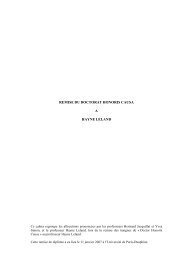

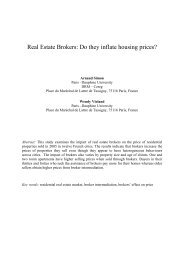
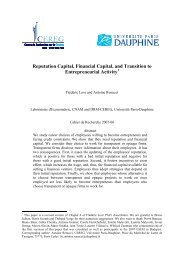

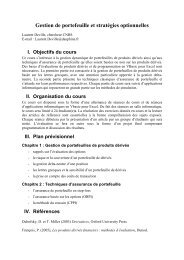



![& 6 ] ^ F ]^ - CEREG - Université Paris-Dauphine](https://img.yumpu.com/33326502/1/184x260/-6-f-cereg-universitac-paris-dauphine.jpg?quality=85)

